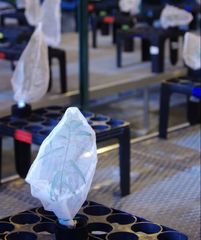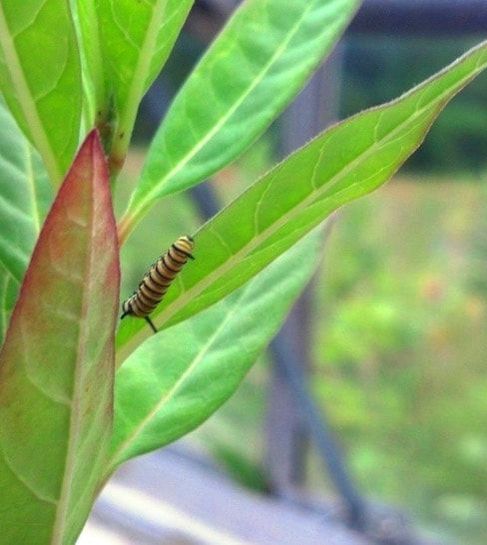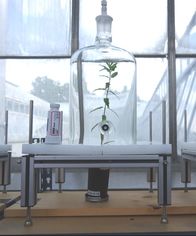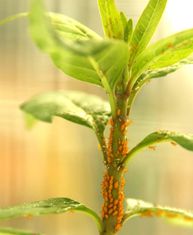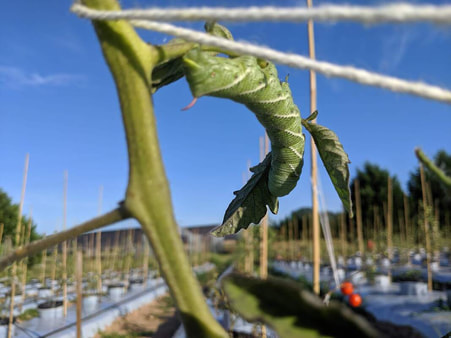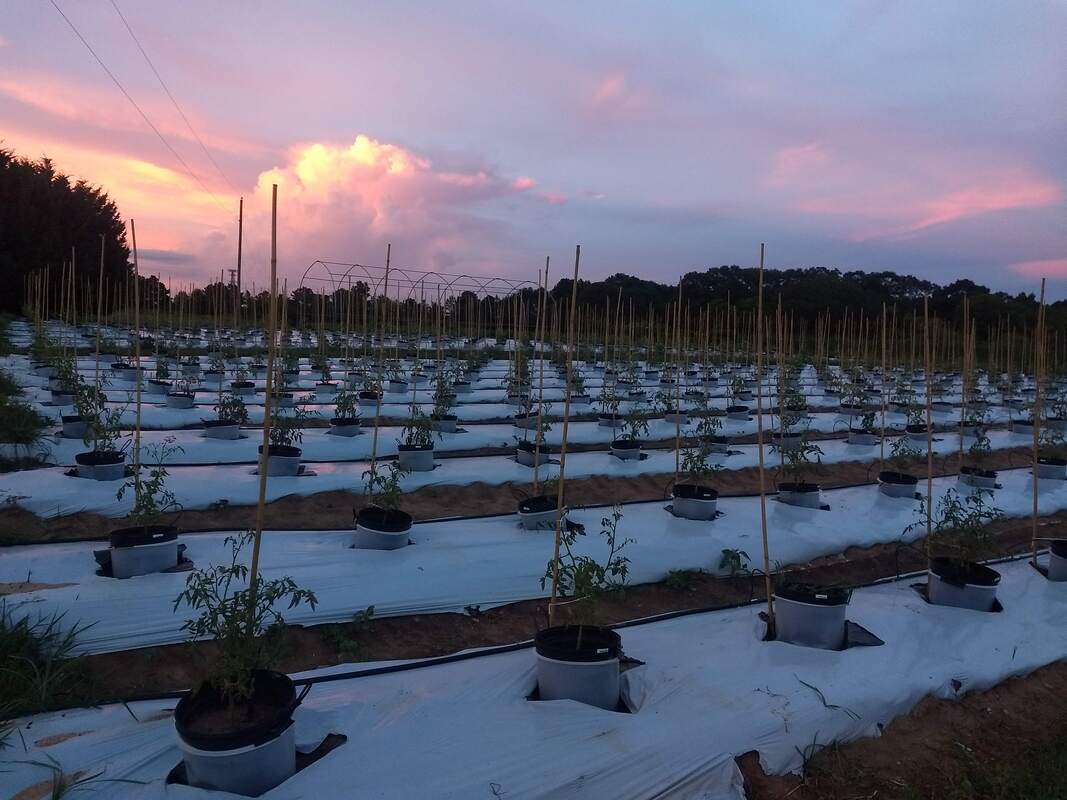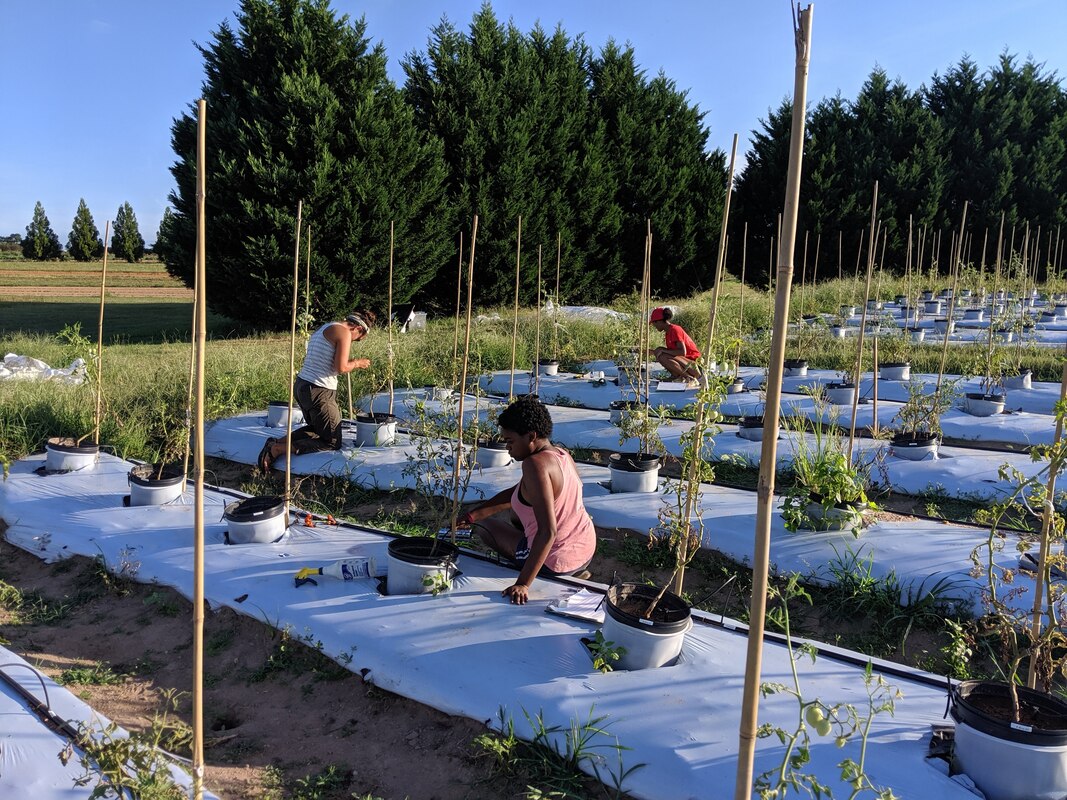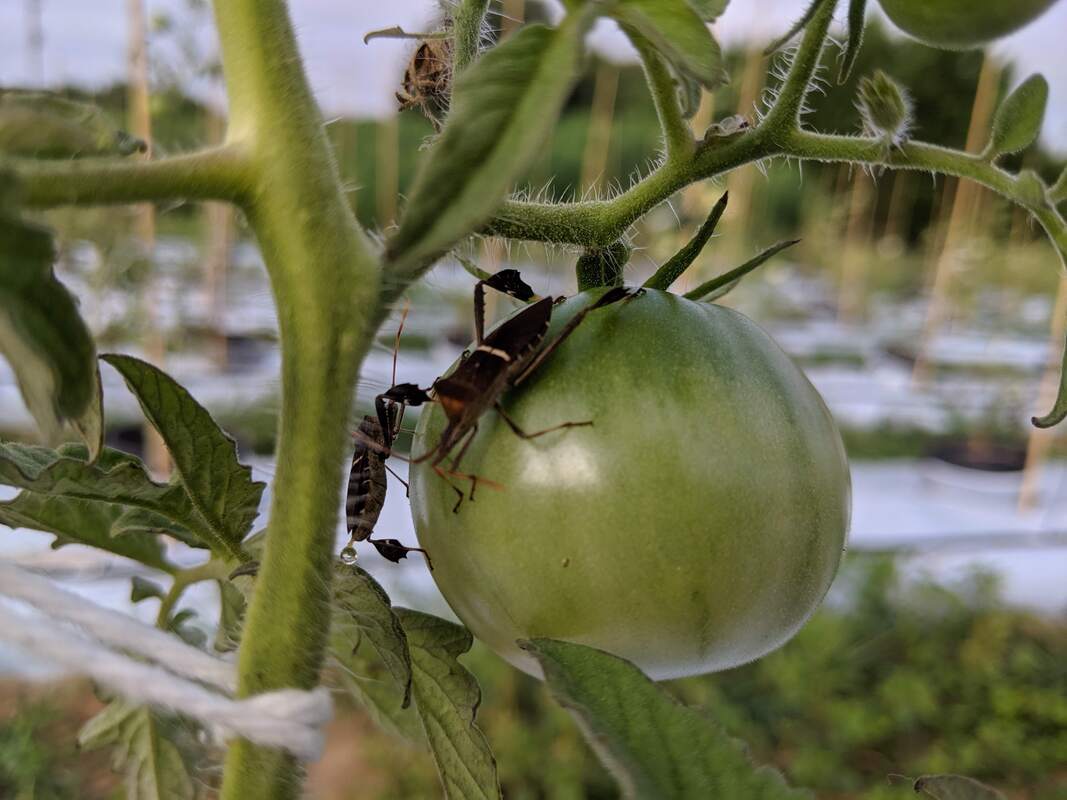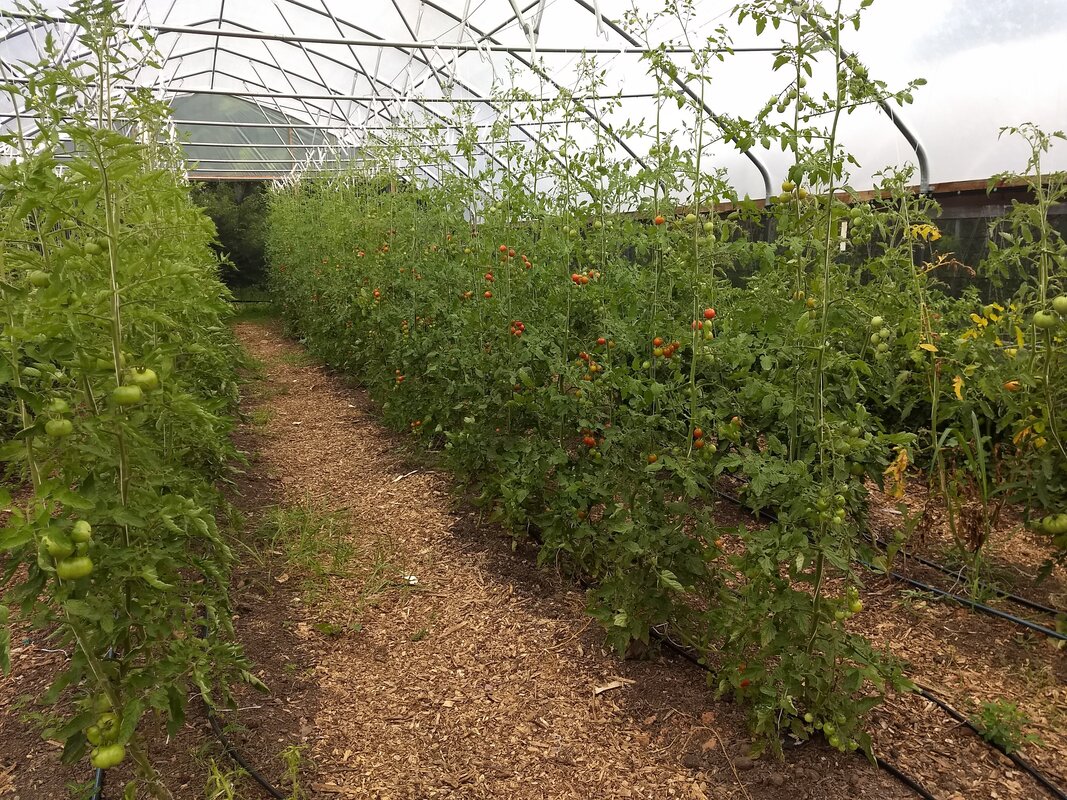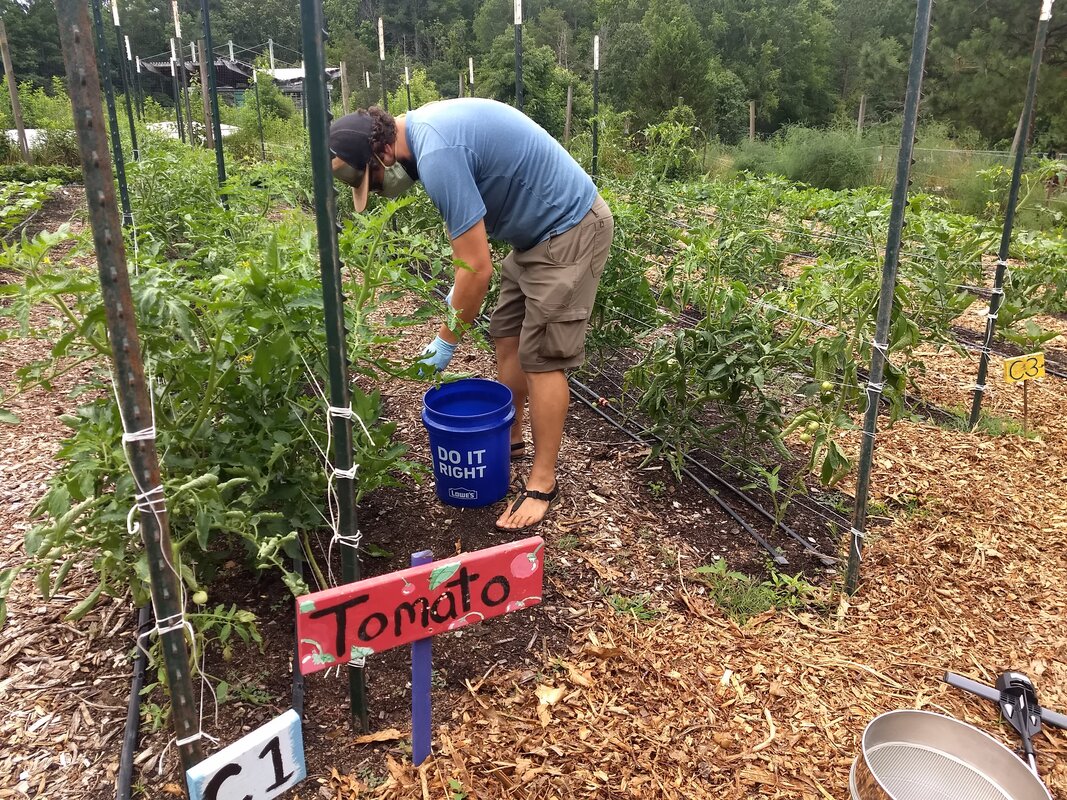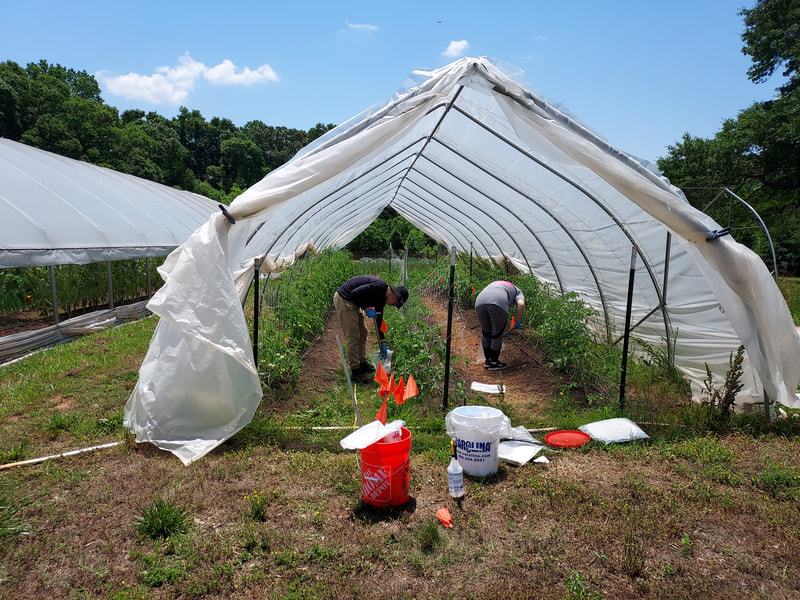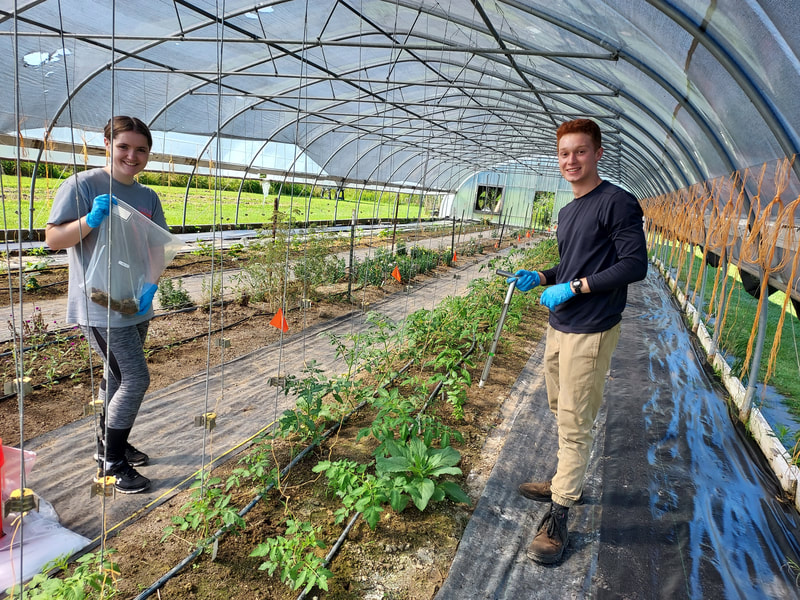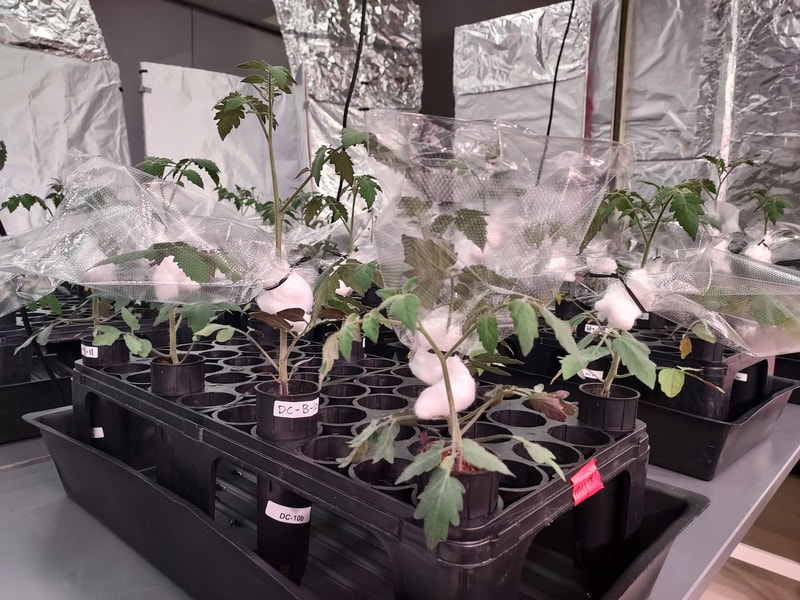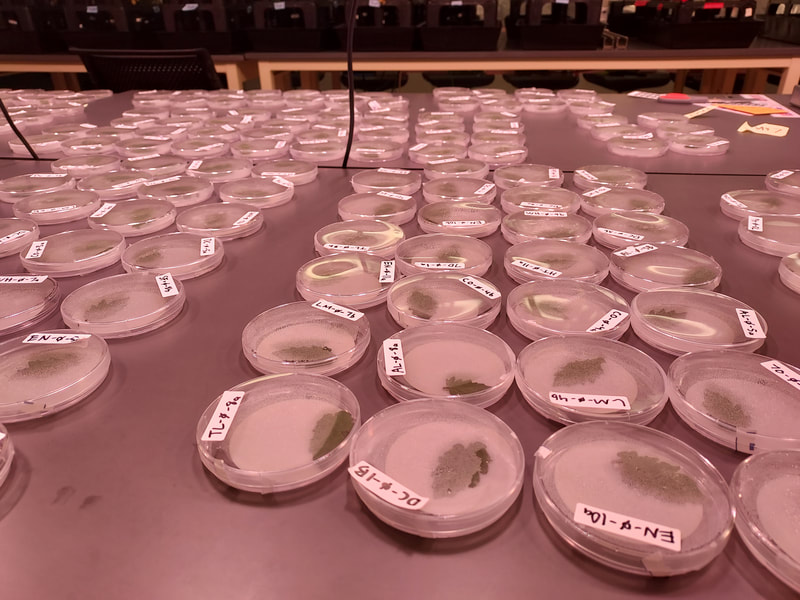I seek to understand the mechanisms underlying interactions among microbes, plants, and insects, and consequences of such interactions for community dynamics
Unraveling the context-dependency of microbe-plant-insect interactions
in natural ecosystems
Chemical ecology of microbe-plant-insect interactions
I am interested in uncovering the chemical and molecular mechanisms that underlie interactions among microbes, plants, and insects. For my dissertation with Mark Hunter at the University of Michigan, I investigated how arbuscular mycorrhizal fungi (AMF), ubiquitous microbial symbionts of plants, influence toxin sequestration and performance of insect herbivores by altering the defensive chemistry of milkweed (Asclepias) species (Meier & Hunter 2018a). Furthermore, as plants interact simultaneously with herbivores and symbionts above and belowground, I also considered how AMF influence the herbivore-induction of plant defensive chemistry both above and belowground (Meier & Hunter 2018b). Lastly, by altering plant volatile emissions, soil microbes can alter the attraction of herbivores and their natural enemies to host plants. Therefore, I also evaluated how AMF and herbivores interact to shape volatile organic compound emissions among milkweed species (Meier & Hunter 2019).
I am interested in uncovering the chemical and molecular mechanisms that underlie interactions among microbes, plants, and insects. For my dissertation with Mark Hunter at the University of Michigan, I investigated how arbuscular mycorrhizal fungi (AMF), ubiquitous microbial symbionts of plants, influence toxin sequestration and performance of insect herbivores by altering the defensive chemistry of milkweed (Asclepias) species (Meier & Hunter 2018a). Furthermore, as plants interact simultaneously with herbivores and symbionts above and belowground, I also considered how AMF influence the herbivore-induction of plant defensive chemistry both above and belowground (Meier & Hunter 2018b). Lastly, by altering plant volatile emissions, soil microbes can alter the attraction of herbivores and their natural enemies to host plants. Therefore, I also evaluated how AMF and herbivores interact to shape volatile organic compound emissions among milkweed species (Meier & Hunter 2019).
Influence of microbes on multitrophic interactions
Most studies to date have considered only the effects of microbes on bipartite interactions between plants and insects. However, herbivore populations are known to be structured both by bottom-up forces, such as resource availability, and top-down forces, such as predators and parasitoids. Microbial symbionts, such as AMF, can alter both bottom-up forces, such as by altering plant nutrient availability and defenses, and top-down forces, by altering the attraction of natural enemies to their herbivore prey. Through field experiments, I found that AMF shape the population dynamics of herbivores and their natural enemies by altering the strength of these forces (Meier & Hunter, 2021).
Most studies to date have considered only the effects of microbes on bipartite interactions between plants and insects. However, herbivore populations are known to be structured both by bottom-up forces, such as resource availability, and top-down forces, such as predators and parasitoids. Microbial symbionts, such as AMF, can alter both bottom-up forces, such as by altering plant nutrient availability and defenses, and top-down forces, by altering the attraction of natural enemies to their herbivore prey. Through field experiments, I found that AMF shape the population dynamics of herbivores and their natural enemies by altering the strength of these forces (Meier & Hunter, 2021).
Utilizing microbe-plant interactions to promote natural pest control in agroecosystems
Managing soils for natural pest control
For my USDA-NIFA postdoctoral fellowship at the University of Georgia in the lab of Bill Snyder, I investigated how we can manage soils to improve natural pest control. Specifically, I sought to understand (1) how common soil management practices shape microbial communities, (2) how these shifts in microbial communities alter plant resistance to herbivores and disease, and (3) whether certain management practices can enhance natural suppression of herbivores by their natural enemies. To do so, I carried out a large field experiment (Summer 2019), evaluating how common soil amendments (chicken manure, fish bone meal, worm castings, or a mix of all three) influence insect pests and pathogens of tomatoes in the field. I found that the addition of worm castings promoted, but fish bone meal and chicken manure suppressed, rhizosphere bacterial and fungal diversity. Importantly, organic amendments that promoted diverse microbial communities, such as worm castings, suppressed herbivore pressure and infection by Southern Blight, a soil-borne pathogen (Meier et al. in prep).
For my USDA-NIFA postdoctoral fellowship at the University of Georgia in the lab of Bill Snyder, I investigated how we can manage soils to improve natural pest control. Specifically, I sought to understand (1) how common soil management practices shape microbial communities, (2) how these shifts in microbial communities alter plant resistance to herbivores and disease, and (3) whether certain management practices can enhance natural suppression of herbivores by their natural enemies. To do so, I carried out a large field experiment (Summer 2019), evaluating how common soil amendments (chicken manure, fish bone meal, worm castings, or a mix of all three) influence insect pests and pathogens of tomatoes in the field. I found that the addition of worm castings promoted, but fish bone meal and chicken manure suppressed, rhizosphere bacterial and fungal diversity. Importantly, organic amendments that promoted diverse microbial communities, such as worm castings, suppressed herbivore pressure and infection by Southern Blight, a soil-borne pathogen (Meier et al. in prep).
Investigating how on-farm management may promote disease suppressive soils
In Summer 2020, formed a network of sixty collaborating organic farmers throughout the Southeast. Through on-farm interviews and soil surveys, I am using a correlative approach to untangle how on-farm management shapes soil physicochemical properties, microbial communities (via Illumina MiSeq), and the abundance of soil-borne pathogens, such as Bacterial Wilt and Southern Blight, (via qPCR, in collaboration with Dr. Hehe Wang, Clemson University) and plant-parasitic nematodes. Our preliminary analyses suggest that on-farm management that promotes highly diverse bacterial and fungal communities in soil suppress the abundance of Bacterial Wilt in soils. More results coming soon!
In Summer 2020, formed a network of sixty collaborating organic farmers throughout the Southeast. Through on-farm interviews and soil surveys, I am using a correlative approach to untangle how on-farm management shapes soil physicochemical properties, microbial communities (via Illumina MiSeq), and the abundance of soil-borne pathogens, such as Bacterial Wilt and Southern Blight, (via qPCR, in collaboration with Dr. Hehe Wang, Clemson University) and plant-parasitic nematodes. Our preliminary analyses suggest that on-farm management that promotes highly diverse bacterial and fungal communities in soil suppress the abundance of Bacterial Wilt in soils. More results coming soon!
Identifying on-farm microbial communities that enhance plant resistance to insect herbivores
At Davidson College, my research students (Sam & Kayleigh) and I are investigating which microbial communities from local organic farm soils may suppress insect herbivores by altering plant traits. At the beginning of the season (Spring 2022), we sampled soil at the farms of 10 collaborating, sustainable growers. We used soil from these farms as microbial inoculants in manipulative growth-room experiments to investigate which on-farm microbial communities enhance tomato plant resistance to a common generalist (beet armyworm) and specialist (tomato hornworm) insect pest. We'll sequence the fungal and bacterial communities via Illumina MiSeq and assay tomato plant defenses (e.g. protease inhibitors) and nutritive quality to determine which on-farm microbial communities enhance plant resistance to insect herbivores, and the mechanisms by which they do so.
At Davidson College, my research students (Sam & Kayleigh) and I are investigating which microbial communities from local organic farm soils may suppress insect herbivores by altering plant traits. At the beginning of the season (Spring 2022), we sampled soil at the farms of 10 collaborating, sustainable growers. We used soil from these farms as microbial inoculants in manipulative growth-room experiments to investigate which on-farm microbial communities enhance tomato plant resistance to a common generalist (beet armyworm) and specialist (tomato hornworm) insect pest. We'll sequence the fungal and bacterial communities via Illumina MiSeq and assay tomato plant defenses (e.g. protease inhibitors) and nutritive quality to determine which on-farm microbial communities enhance plant resistance to insect herbivores, and the mechanisms by which they do so.
